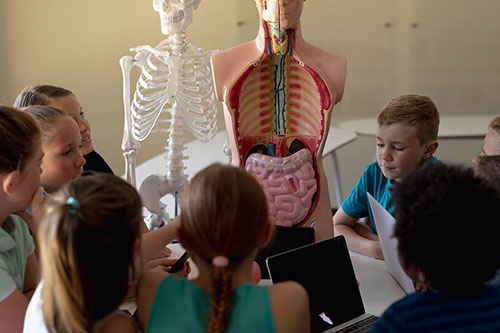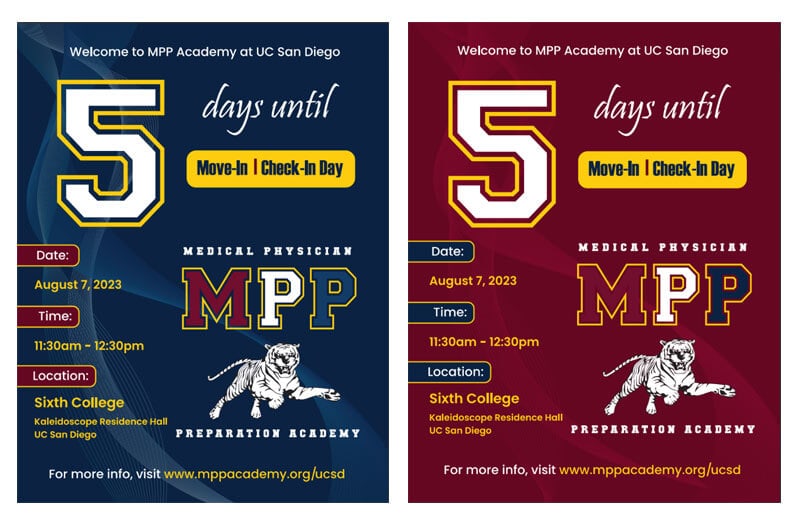EKG Interpretation 1: Intended to help students understand and interpret electrocardiogram results.
EKG Interpretation 2: Placement of EKG leads, Heart Conduction System and EKG Basics
Learn where to place the 10 electrodes when performing a 12 lead EKG, the steps in the Heart Conduction System, and how those steps are reflected on an EKG waveform. Plus EKG basics, including: duration of small boxes and big boxes, and expected amplitude and duration of the EKG components.
EKG Interpretation 3: Analysis of Heart Rhythm, Heart Rate, P wave, PR interval and QRS complex
Learn the key steps in analyzing an EKG strip: determining the heart rhythm (regular vs. irregular), determining the heart rate using small box method vs. big box method vs. 6-second strip method; P waves; PR intervals; and QRS complexes.
EKG Interpretation 4: Natural Pacemakers of the Heart – Key Differentiating Factors Learn about the different natural pacemakers in the heart: the SA node, the atria foci, the junctional foci, and the ventricular foci. We describe the inherent rate and key characteristics of each pacemaker, which will help you understand and differentiate the different dysrhythmias.
EKG Interpretation 5: Sinus Rhythms Learn about Sinus Rhythms, including: Normal Sinus Rhythm, Sinus Bradycardia, Sinus Tachycardia, and Sinus Arrhythmia. Explains how to analyze each rhythm and talks briefly about interventions for the different arrhythmias.
EKG Interpretation 6: Atrial Rhythms Reviews the key atrial dysrhythmias, including: Premature Atrial Complexes, Atrial Flutter, Atrial Fibrillation, and Supraventricular Tachycardia. Presents EKG strips for each of these dysrhythmia, and discusses the heart rhythm, heart rate, and other components of each dysrhythmia.
EKG Interpretation 7: Junctional Rhythms Learn the key characteristics of junctional rhythms like junctional bradycardia, accelerated junctional, and junctional tachycardia. Check out EKG strips for each of these dysrhythmias, and learn about the heart rhythm, heart rate, and other components of each!
EKG Interpretation 8: Ventricular Rhythms Learn how to identify the key ventricular dysrhythmias: Premature Ventricular Complexes, Ventricular Tachycardia, Torsades de Pointes, Ventricular Fibrillation, Idioventricular Rhythm, and Asystole.
EKG Interpretation 9: Atrioventricular Blocks (AV Blocks) Learn the key facts on the 4 types of AV Blocks: 1st degree AV Block, 2nd degree AB Block types 1 and 2, and 3rd degree AV Block. We explain the key characteristics of each type of block, along with ways to remember the differences between the blocks.
EKG Interpretation 10: Other EKG Abnormalities Learn about some important EKG abnormalities, including: bundle branch blocks, sinus pauses, and escape beats; as well as key EKG abnormalities seen with electrolyte imbalances, cardiac disorders (angina, ischemia, pericarditis), and respiratory disorders (pulmonary embolism, COPD).
EKG Interpretation 11: Artificial Pacemakers, Tachycardia and Bradycardia Learn about synchronous vs. asynchronous artificial pacemakers, and how to identify atrial pacing, ventricular pacing, and AV pacing on EKG strips. Plus, learn about the most common causes, symptoms and interventions for bradycardia and tachycardia dysrhythmias.








